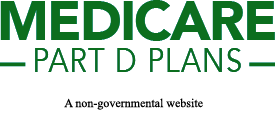Find a Medicare Part D prescription drug plan

Medicare Part D
Prescription Drug Coverage 2026
Medicare Part D Plans for 2026 – Your Comprehensive Guide
Deciding on the best Medicare Part D plans for 2026? Our direct comparison simplifies your choice. This article spotlights the top contenders, detailing their costs, coverage, and customer feedback, rooted in the latest 2026 Medicare reforms. Expect a straightforward guide to identifying a Medicare Part D plan that aligns with your healthcare and financial needs for the upcoming year.
Key Takeaways
- Significant reforms to Medicare Part D take effect in 2026, introducing a $2,000 out-of-pocket spending cap, eliminating the coverage gap, and increasing plans’ share of drug costs in the catastrophic phase to 20%.
- Choosing a Medicare Part D plan requires careful consideration of the plan’s formulary for medication coverage, cost of premiums (which are limited to a 6% increase annually from 2024 to 2029), and deductibles, to ensure suitability for the individual’s needs.
- To optimize Medicare Part D benefits, beneficiaries can compare plan costs, maximize savings with generic medications, navigate insulin cost caps, and leverage assistance programs such as the Low-Income Subsidy and SHIPs for additional support.
Navigating the New Landscape of Medicare Part D in 2026
As mandated by the Inflation Reduction Act of 2022, significant reforms to Medicare Part D plans will take effect starting in 2026. These changes are poised to make a substantial difference to your prescription drug costs and the way you navigate the Medicare Part D landscape.
Understanding the $2,000 Out-of-Pocket Cap
A key feature of these reforms is the new out-of-pocket spending cap of $2,000 for prescription drugs, addressing the issue of very high drug costs. This is a game-changer for many beneficiaries. In fact, in 2021, 1.5 million Medicare beneficiaries would have spent $2,000 or more on prescription drugs. With the new cap, they could save an average of $1,335 annually. That’s a significant number of beneficiaries in most states, including tens of thousands in each state, who stand to benefit from this new cap.
No More Coverage Gap: What It Means for You
Another big change coming in 2026 is the elimination of the coverage gap phase, also known as the ‘donut hole’. This stage in Medicare Part D was characterized by reduced prescription drug coverage, which often led to higher out-of-pocket drug costs.
With the removal of the coverage gap, you can enjoy uninterrupted coverage all year round, potentially lowering your out-of-pocket drug costs.
Increased Plan Responsibility in Catastrophic Coverage
In addition to the out-of-pocket cap and the elimination of the coverage gap, there’s one more change that’s worth noting. In 2026, Part D plans will be responsible for covering 20% of total drug costs in the catastrophic phase, up from the previous 15%. This shift in responsibility from enrollees to the plans could result in considerable savings for those who use high-cost medications.
Selecting the Right Plan Amidst Reform: Factors to Consider
While understanding the changes to Medicare Part D is crucial, it’s equally important to choose a plan that suits your individual needs. With the differences in copays and deductibles varying significantly across different Part D plans, it’s essential to consider factors such as:
- Which medications are covered
- the cost of premiums
- deductibles
- co-insurance
Assessing Plan Coverage for Your Medications
A crucial step in selecting a Part D plan is to review the plan’s formulary. This is a list of all the Part D prescription drug medications covered by the plan. Medicare Part D formularies must cover at least two drugs in each therapeutic category and include substantially all drugs in six key classes. Regularly checking the formulary, especially after any plan changes, will ensure that all your medications are covered.
Moreover, reviewing the plan’s formulary for coverage of generic medications can secure lower costs for you.
Comparing Plan Premiums Post-Reform
Another factor to consider when choosing a Part D plan is the cost of premiums. The Inflation Reduction Act limits premium increases for Medicare Part D to a maximum of 6% annually from 2024 to 2029. In 2026, the average monthly premium for a Medicare Part D plan is projected to be $55.50.
This means you can expect your premiums to be relatively stable over the next few years.
Deductibles and Cost Sharing in the New Era
Let’s not forget the importance of deductibles in your plan selection. In 2023, the deductible in the Medicare Part D benefit is up to $505, with some plans opting not to charge a deductible.
So, when choosing a plan, take note of the deductible amount as it will directly impact your out-of-pocket costs.
See plans in your area instantly!
Advertisement
Top-Rated Medicare Part D Plans for Superior Coverage
Now that you’re equipped with the knowledge of the upcoming changes to Medicare Part D and how to select the right plan, let’s turn our attention to some top-rated Medicare Part D plans.
Notably, Wellcare, AARP/UnitedHealthcare, and Humana have emerged as providers of superior coverage.
Plans with Exceptional Customer Service Ratings
When it comes to customer service, Wellcare and Humana stand out. Wellcare, with its elevated member experience score of 4.0, offers multiple $0-deductible plan options, contributing to its high ratings.
Humana, despite falling behind in other quality measures, has been commended for its availability of foreign language interpreters and TTY services in its call centers.
Plans Offering Comprehensive Formulary Coverage
If comprehensive formulary coverage is your priority, consider Aetna and AARP/UnitedHealthcare. Aetna’s Medicare Part D plans provide extensive coverage options across various regions. The company’s SilverScript Plus plan is particularly distinguished for offering expanded formulary coverage during the gap phase. Additionally, you may want to explore Medicare supplement insurance options to further enhance your coverage.
On the other hand, AARP/UnitedHealthcare boasts few member complaints and limited exits, indicating strong customer satisfaction and additional benefits.
Plans with Attractive Extra Benefits
In terms of extra benefits, Medicare Advantage plan providers like Humana and UnitedHealthcare stand out. Some of AARP/UnitedHealthcare’s Part D plans offer $0-copay for certain medications.
Similarly, Cigna’s Medicare Part D plans include $0-copay options for Tier 1 generic drugs applicable to all their plans.
Cost-Effective Solutions: Finding Value in Medicare Part D
While understanding the changes and selecting the right plan are important, finding ways to maximize your savings is equally crucial. Here, we’ll discuss strategies to find value in Medicare Part D, including:
- Comparing premiums
- Comparing deductibles
- Maximizing savings with generic medications
- Maximizing savings with insulin cost caps
The Hunt for Low Premiums and Deductibles
If you’re looking to save on premiums and deductibles, Wellcare and Aetna might be the right choice for you. Wellcare offers some of the least expensive options on the market, introducing $0-premium Medicare Part D plans in certain locations for 2026.
Aetna provides affordable alternatives with lower premiums and deductibles compared to many competitors, making it a viable option for cost-conscious beneficiaries.
Maximizing Savings with Generic Medications
Another way to maximize your savings is by opting for generic medications. Medicare Part D plans, such as the Medicare prescription drug plan, can offer significant copay reductions for generic medications. For instance, Cigna and UnitedHealthcare’s AARP MedicareRx Walgreens plan features options with $0 or low copays for Tier 1 generic drugs. Additionally, considering a Medicare prescription payment plan could further help in managing your prescription costs.
So, considering generic drugs as an alternative to brand-name drugs can be a strategic choice to maximize savings on your medication expenses.
Navigating Insulin Costs with Medicare Part D
For beneficiaries managing insulin costs, there’s some good news. As of 2023, Medicare Part D caps the cost of insulin to $35 for a one-month supply. This cap is universally applicable to all Medicare Part D enrollees, ensuring equitable financial relief for insulin across different income groups.
Insights into Part D Enrollment: Timing and Tactics
Once you’ve understood the changes and picked the right plan, the next step is to ensure that you enroll at the right time to avoid late-enrollment penalties.
Here, we’ll discuss the open enrollment period and how to avoid late-enrollment penalties.
Open Enrollment Period: Mark Your Calendars
The Medicare open enrollment period occurs annually from October 15 to December 7. During this period, you can update your Medicare health and drug plans, including changes to prescription drug coverage. It’s a good idea to sign up for updates from Medicare to receive reminders and tips on how to save on costs.
Avoiding Late-Enrollment Penalties
It’s crucial to enroll in a Medicare drug plan when you’re first eligible to avoid the Part D late enrollment penalty. There are also Special Enrollment Periods that allow you to change your Medicare Advantage and Part D coverage following life events, such as moving or losing other insurance.
Leveraging Assistance Programs for Added Support
To further enhance your Medicare Part D experience, you can leverage assistance programs like the Low-Income Subsidy Medicare program. This program is designed to help individuals with limited resources by lowering their costs for prescription drugs covered under Medicare Part D.
Qualifying for the Low-Income Subsidy Program
To qualify for the Low-Income Subsidy program, individuals should have a monthly income of up to $1,903 or $2,575 for couples, with specified limits on assets. Some applicants may still qualify for the Low-Income Subsidy even if their income or assets are slightly above the limits, as not all types of income and assets are counted towards the eligibility thresholds.
Exploring State Health Insurance Assistance Programs (SHIPs)
State Health Insurance Assistance Programs (SHIPs) are another excellent resource for individuals navigating Medicare enrollment decisions and seeking information about Medicaid services. SHIP provides impartial assistance to Medicare beneficiaries, their families, and caregivers on understanding Medicare, reviewing plan options, or answering Medicare-related questions.
Utilizing Tools and Resources for Informed Choices
The journey to mastering Medicare Part D doesn’t end with understanding changes, selecting the right plan, and enrolling at the right time. Being informed about the resources available to you can make your Medicare journey smoother.
Mastering the Medicare Plan Finder
The Medicare Plan Finder is an accessible online tool that helps individuals find Medicare health and drug plans by entering their ZIP code. This tool guides you through comparing plan options, tailoring results to your specific medication needs and preferences.
So, make sure to utilize this tool to compare prescription drug plans, including Medicare Part D plans that cover your prescriptions, such as insulin, and to evaluate costs based on your preferred pharmacies.
Educational Resources at Your Fingertips
Besides the Medicare Plan Finder, there are several other educational resources available. CMS supports Medicare Part D education with standardized outreach materials, agent and broker training and testing guidelines, and model marketing materials.
Web-based training courses are available to Medicare Part D plan personnel, covering Part C and Part D requirements as well as common audit findings.
Summary
Understanding the nuances of Medicare Part D can be challenging, but with the right information and tools, you can navigate the changes, select the best plan, enroll at the right time, and even find cost-effective solutions to maximize your savings. Remember, the key to making the most of your Medicare Part D coverage is to stay informed, consider your individual health needs and financial situation, and leverage the resources available to you.
Find a Plan and Enroll Online Yourself!
Advertisement
Frequently Asked Questions
What are the major changes to Medicare Part D in 2026?
In 2026, Medicare Part D will undergo major changes, such as introducing a $2,000 out-of-pocket spending cap, removing the coverage gap phase, and augmenting plan responsibility in catastrophic coverage.
How can I avoid late-enrollment penalties for Medicare Part D?
To avoid late-enrollment penalties for Medicare Part D, it’s important to enroll in a Medicare drug plan when you’re first eligible or during the open enrollment period. Don’t wait to sign up.
How can I maximize savings on my medication expenses?
To maximize savings on medication expenses, consider choosing a plan with low premiums and deductibles, switching to generic drugs, and exploring programs like the Low-Income Subsidy if you qualify. This can help you reduce your medication costs.
What resources are available to help me make informed decisions about Medicare Part D?
You can find valuable information and support for making informed decisions about Medicare Part D through resources like the Medicare Plan Finder, web-based training courses, and State Health Insurance Assistance Programs (SHIPs). These resources can help you make the best choices for your healthcare needs.
What are the benefits of the Low-Income Subsidy program?
The Low-Income Subsidy program can help lower the costs of prescription drugs covered under Medicare Part D for people with limited resources. It offers significant financial relief for eligible individuals.
Begin choosing your plan
Advertisement
ZRN Health & Financial Services, LLC, a Texas limited liability company.





